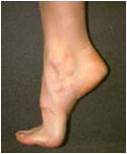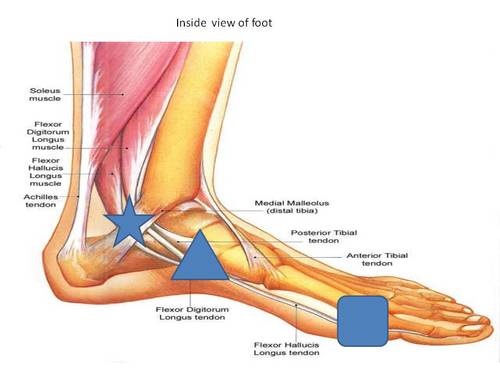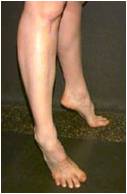My dancers with foot, ankle, knee or even hip pain have taught me that the root cause often starts with abnormal motion of the big toe.
Dancers however aren’t the only ones who suffer from this problem.
Recommend that any athlete, dancer, or other type of performer with ankle, knee, or even hip pain to please read on!
How does the Big Toe work in dance or sports?
Some may question why this small joint (aka first metatarsalphalangeal joint or 1st MTP joint) may cause such a great list of problems.
Well, let’s review why optimal big toe function is so essential for healthy dance or sport performance.
In many dance positions and movements, including demi-pointe or releve, a dancer ideally should achieve full big toe dorsiflexion.

DORSIFLEXION: Movement of the big toe towards the shin
Any sprint, running on toes, or approach, especially barefoot, also needs solid dorsiflexion.
Limitations in big toe dorsiflexion, known as hallux rigidus, lead to painful compensations or changes at several joints:
- Rolling the foot outward (aka sickling) puts more pressure on the middle or outside of the foot
- Not only aesthetically unpleasing, but also increases ankle sprains and damage to the bones on the outside of the foot
- Forces the knees into a more forward position (can’t see toes when in squatting position) placing abnormal stresses on the front of the knee
- Increases need to bend the hips, placing an unusual demand on these joints
What Causes Big Toe Limitations?
Osteophytes
Deposits of extra bone growth in the 1st MTP joint that are one cause of big toe limited range of motion.
Surgical removal may be necessary and many a career has been shortened due to such destructive joint breakdown.
Flexor Hallicus Longus Tendon Dysfunction
A more common cause of limited big toe motion, especially in the school-age individuals.
The Flexor Hallicus Longus (FHL) tendon follows a course along the inside of the foot and ends at underneath the 1st MTP joint.
Restriction of the FHL routinely occurs in three spots:
Tarsal Tunnel at inside of ankle (STAR)
Intersection of FHL with neighboring Flexor Digitorum Longus tendon (TRIANGLE)
Attachment of FHL to the first bone (proximal phalange) of the big toe (SQUARE)
Find a nice review of FHL dysfunction in dancers here.
How to treat big toe limitations and FHL dysfunction?
Start with aggressive stretching the FHL combined with intense friction massage at those three points. Best results tend to come after working with a trained medical professional. Self or home-based massage items include tennis balls, golf balls, and ice blocks (paper ice cups are a favorite).
How aggressive and intense does this treatment need to be?
Let’s just say that the stretching and massage can be uncomfortable, bordering on painful. Bruising of the foot is not uncommon if proper aggressive intensity has been found. Warning about the potential pain and bruising helps increases chances of continuing with treatment.
How have other dancers, athletes or medical professionals encountered issues with the Big Toe? What other techniques have dealt with this problem?



